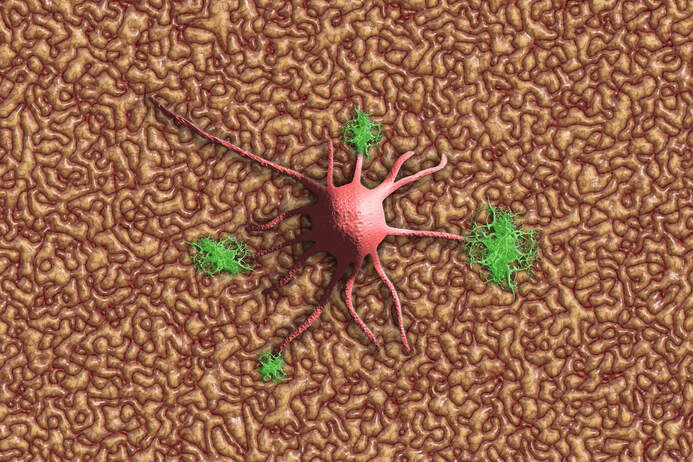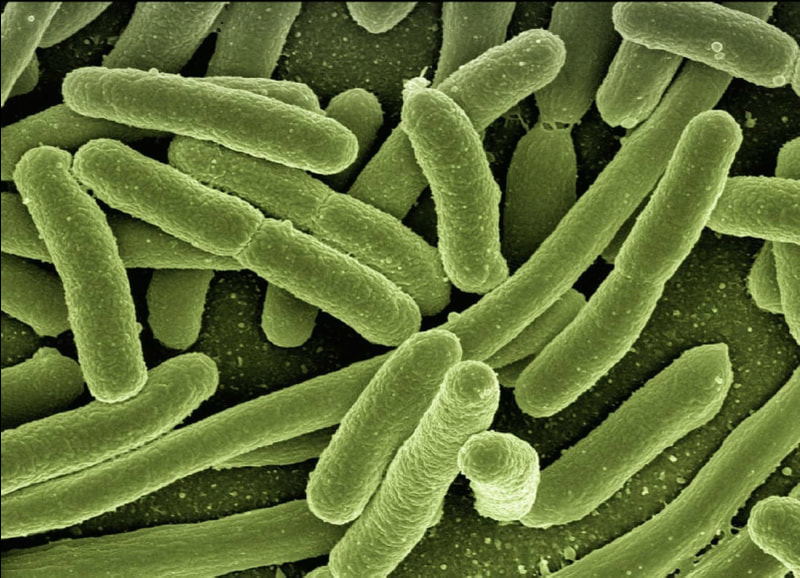Studying Neural DNA Repair Gives Hope for Alzheimer’s Patients
Alzheimer’s is a neurodegenerative disease that commonly affects those who are at least 65 years old. It is also the 6th leading cause of death in the United States. A neurodegenerative disease refers to a chronic condition in which the neurons—a type of brain cell responsible for motor function, sensory capabilities, and relaying information throughout the body—deteriorate over time. This process is detrimental to the patient, because unlike other cells, neurons have limited self-repair mechanisms. Once neurons are destroyed, they are often destroyed permanently.
The specific cause of Alzheimer’s isn’t fully understood, but it is a result of the brain progressively shrinking, cells dying over time, and neurons losing their ability to make connections with each other. Initial symptoms may include the inability to remember recently learned information, abrupt changes in behavior, and social withdrawal. Eventually, the patient will experience severe memory loss and the inability to perform normal tasks.
Although prescriptions can temporarily reduce the progression of these symptoms, there remains to be a cure. Since Alzheimer’s and many other neurodegenerative disorders result from neuronal damage, medical researchers are highly invested in finding ways to repair these neurons, or learning if neurons are capable of self-repair mechanisms.
One major issue is that neurons cannot replicate their own DNA, which is a key step in mitosis. Mitosis is a process that constantly occurs in the body, allowing for cell division, growth, and replication. Since neurons do not participate in this process, they have limited mechanisms to protect their genome. The genome refers to the set of genetic material present within an organism, and in order for that living being to properly function, its DNA must be protected. Unfortunately, the ability of neurons to protect the genome naturally decreases over time as a result of aging.
The specific cause of Alzheimer’s isn’t fully understood, but it is a result of the brain progressively shrinking, cells dying over time, and neurons losing their ability to make connections with each other. Initial symptoms may include the inability to remember recently learned information, abrupt changes in behavior, and social withdrawal. Eventually, the patient will experience severe memory loss and the inability to perform normal tasks.
Although prescriptions can temporarily reduce the progression of these symptoms, there remains to be a cure. Since Alzheimer’s and many other neurodegenerative disorders result from neuronal damage, medical researchers are highly invested in finding ways to repair these neurons, or learning if neurons are capable of self-repair mechanisms.
One major issue is that neurons cannot replicate their own DNA, which is a key step in mitosis. Mitosis is a process that constantly occurs in the body, allowing for cell division, growth, and replication. Since neurons do not participate in this process, they have limited mechanisms to protect their genome. The genome refers to the set of genetic material present within an organism, and in order for that living being to properly function, its DNA must be protected. Unfortunately, the ability of neurons to protect the genome naturally decreases over time as a result of aging.
Image Source: geralt
To better understand neural repair mechanisms, Dylan Reid and his research team at The Salk Institute developed a method they termed “Repair-seq.” In this process, they created neurons from stem cells, injected them with artificial nucleosides (building blocks of DNA), and mapped the nucleosides using DNA sequencing. The researchers knew the DNA that was created over time would eventually be damaged due to normal cellular processes. In this experiment, they wanted to see if the neurons would be able to repair or protect certain sections of the DNA.
To their surprise, they found that the neurons protected very specific areas of DNA, known as DNA hotspots, or portions that are prone to genetic mutations. These 61,178 repair hotspots covered about 1.6% of the entire neural genome, and about 23.5% of these hotspots were found in regions that have high genetic expression. This implies that neurons may have repair mechanisms with a very specific function, which is great news considering that identifying and enhancing neural repair may help lead to potential disease treatments.
In the second stage of the study, the researchers then used a technique called RIME on the sections of identified chromosomes (DNA molecules) that underwent repair in order to identify which proteins could be found at the hot spots. After comparing the proteins to the Consensus Brain Protein Coexpression Study dataset, they determined that 21 of the proteins in the hot spot regions were proteins that are typically damaged in Alzheimer’s patients.
Although more research needs to be conducted, these findings indicate that neurons may have repair mechanisms that are specific to certain areas in DNA, which could help slow down aging or neurodegeneration. Since Alzheimer’s disease results from neural damage, conducting further research on the Repair-seq technique could improve understanding on how aging disrupts the genome and how it can be fixed.
To their surprise, they found that the neurons protected very specific areas of DNA, known as DNA hotspots, or portions that are prone to genetic mutations. These 61,178 repair hotspots covered about 1.6% of the entire neural genome, and about 23.5% of these hotspots were found in regions that have high genetic expression. This implies that neurons may have repair mechanisms with a very specific function, which is great news considering that identifying and enhancing neural repair may help lead to potential disease treatments.
In the second stage of the study, the researchers then used a technique called RIME on the sections of identified chromosomes (DNA molecules) that underwent repair in order to identify which proteins could be found at the hot spots. After comparing the proteins to the Consensus Brain Protein Coexpression Study dataset, they determined that 21 of the proteins in the hot spot regions were proteins that are typically damaged in Alzheimer’s patients.
Although more research needs to be conducted, these findings indicate that neurons may have repair mechanisms that are specific to certain areas in DNA, which could help slow down aging or neurodegeneration. Since Alzheimer’s disease results from neural damage, conducting further research on the Repair-seq technique could improve understanding on how aging disrupts the genome and how it can be fixed.
Featured Image Source: GDJ
RELATED ARTICLES
|
Vertical Divider
|
Vertical Divider
|
Vertical Divider
|






